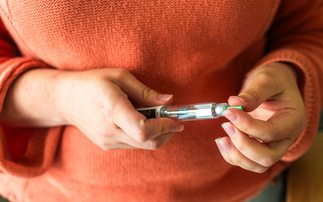With so many different variations of aneurysms, understanding the difference is key to deciding what kind of cover can be offered to those living with the condition, says Debra Bradley
An aneurysm is a localised, blood-filled dilation (bulge) of a blood vessel caused by disease or weakening of the vessel wall. Aneurysms can occur anywhere where there is a blood vessel, but most commonly in arteries at the base of the brain (the circle of Willis) and in the aorta (the main artery coming out of the heart) - which is called an aortic aneurysm.
Aortic aneurysms can occur in the abdomen and also the thoracic aorta. Abdominal aortic aneurysm occurs below the renal arteries and accounts for the majority of cases. Thoracic aortic aneurysms occur in about 25% of cases and are located higher up in the chest.
Aneurysms in the brain are known as intracranial aneurysms and are usually congenital, that is to say, present from birth. A Berry aneurysm is congenital and may be present for many years, remaining undetected until it leaks or ruptures, possibly causing a subarachnoid haemorrhage.
Aneurysms are also described according to shape: saccular or fusiform. A saccular aneurysm resembles a small sack; a fusiform aneurism is shaped like a spindle.
An aneurysm can be true or false. A true aneurysm involves an outpouching of all three layers of the vessel (intima, media and adventitia), and these can be due to congenital malformations, infections or hypertension. A false aneurysm involves outpouching of the adventitia only, and can be due to trauma.
Aortic aneurysms
Aortic aneurysms occur in the thorax, abdomen or both. The majority of fusiform and saccular aneurysms occur in the abdominal aorta below the renal arteries.
The normal external diameter of the abdominal aorta below the renal arteries ranges from 1.66cm to 2.39cm. An aortic abdominal aneurysm is defined as a diameter above 3cm. An aortic aneurysm mostly occurs in men over the age of 65. Other contributory factors to increased risk are a family history of aneurysm, smoking and hypertension.
Atherosclerosis, where fatty deposits build up on the lining of an artery, is an important factor in the development of aortic aneurysms. However, if the aneurysm is in the thorax, then other causes such as rheumatoid arthritis, inflammatory diseases and connective tissue disorders are more likely.
Most abdominal aneurysms and nearly half of thoracic aneurysms are detected by chance before symptoms occur. Abdominal aneurysms may be detected on a routine physical exam, X-ray or ultrasound scan. Thoracic aneurysms are mostly detected by chest X-ray.
Abdominal aortic aneurysm usually presents with low back and mid-abdominal pain, whereas the symptoms of thoracic aneurysm may include heart problems, thrombo-embolism, hoarse voice or low back pain. Rupture or leakage can present with acute severe pain, low blood pressure and vomiting of blood.
Berry aneurysm
Also known as Berry or saccular aneurysms, congenital intracranial aneurysms tend to occur at the junctions of the large arteries in the brain, and more than 80% are in the circle of Willis. The risk of rupture increases with the increasing size of the aneurysm. Most symptomatic aneurysms are more than 1cm.
Berry aneurysms are common, and increased incidence is noted in people with polycystic kidney disease. In 20% to 30% of patients, the aneurysm is multiple. However, they mostly remain asymptomatic and undetected throughout life, generally only being diagnosed with the onset of symptoms.
These include sudden severe headache (following rupture of an aneurysm), occasionally preceded by lesser headaches (possibly from minor leaking of blood), accompanied by vomiting and dizziness and variable degrees of loss of consciousness.
Rupturing Berry aneurysms cause the majority of subarachnoid haemorrhages. However, hypertension is also a risk factor in older adults. Less frequently, subarachnoid haemorrhage is due to arteriovenous malformation, angioma or haemorrhagic disease.
Detection
CT scanning detects the majority of bleeds, unless they are very small. If the CT scan is normal, a lumbar puncture can check for blood in the cerebo-spinal fluid to confirm the presence of a subarachnoid haemorrhage.
Four-vessel cerebral angiography is the preferred choice to define the aneurysm or AVM, and determine if other aneurysms or vascular lesions exist. However, magnetic resonance angiography is now increasingly able to detect small aneurysms and may replace cerebral angiography.
Other types of aneurysm include peripheral artery aneurysms, of which the most common are popliteal artery aneurysms in the leg caused by arteriosclerosis. Carotid artery aneurysms are rare, and usually manifest as a result of trauma, surgery or atherosclerosis.
Debra Bradley is life and disability underwriter at Aegon Scottish Equitable











